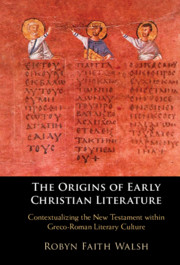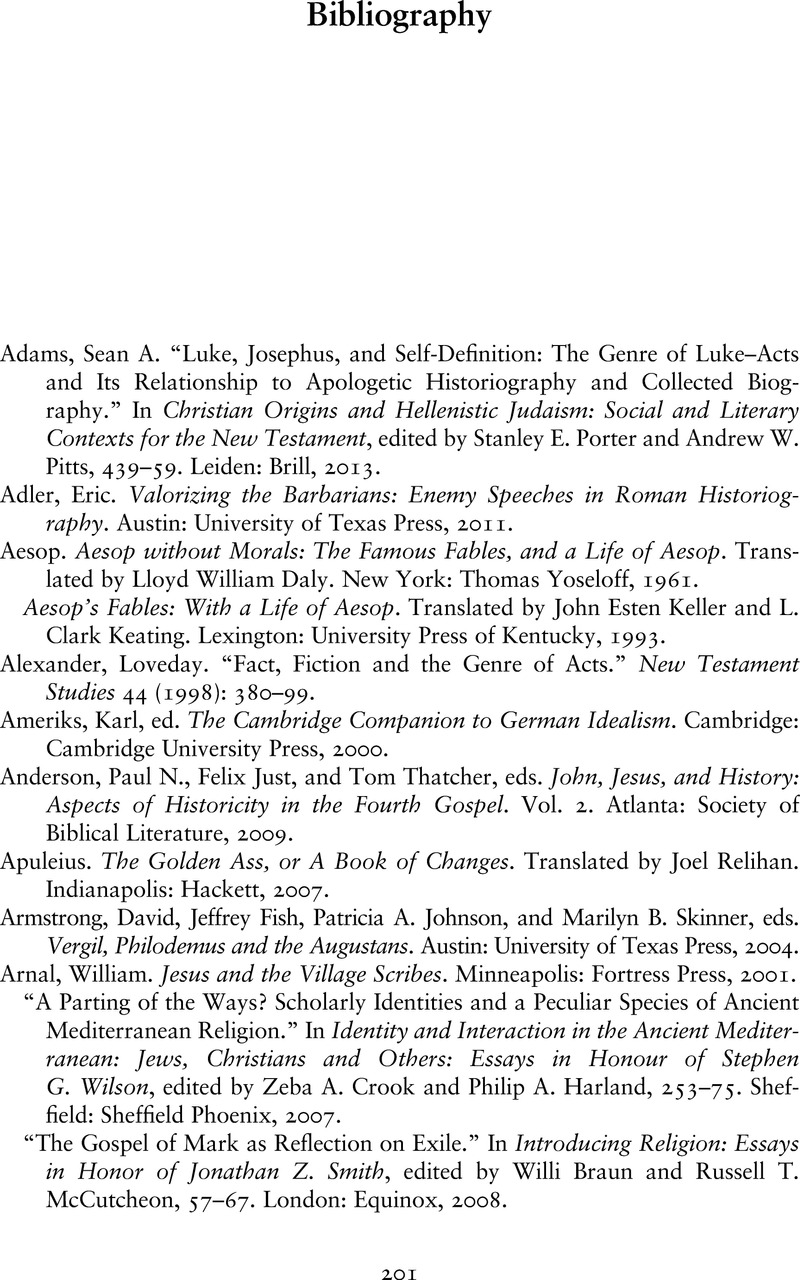 The Origins of Early Christian Literature
The Origins of Early Christian Literature Book contents
- The Origins of Early Christian Literature
- The Origins of Early Christian Literature
- Copyright page
- Dedication
- Contents
- Preface
- Acknowledgments
- Abbreviations
- Note on the Text
- Introduction
- 1 The Myth of Christian Origins
- 2 The Romantic “Big Bang”
- 3 Authorship in Antiquity
- 4 Redescribing Early Christian Literature
- 5 The Gospels as Subversive Biography
- Conclusion
- Bibliography
- Index
- References
Bibliography
Published online by Cambridge University Press: 23 January 2021
- The Origins of Early Christian Literature
- The Origins of Early Christian Literature
- Copyright page
- Dedication
- Contents
- Preface
- Acknowledgments
- Abbreviations
- Note on the Text
- Introduction
- 1 The Myth of Christian Origins
- 2 The Romantic “Big Bang”
- 3 Authorship in Antiquity
- 4 Redescribing Early Christian Literature
- 5 The Gospels as Subversive Biography
- Conclusion
- Bibliography
- Index
- References
Summary

- Type
- Chapter
- Information
- The Origins of Early Christian LiteratureContextualizing the New Testament within Greco-Roman Literary Culture, pp. 201 - 221Publisher: Cambridge University PressPrint publication year: 2021


